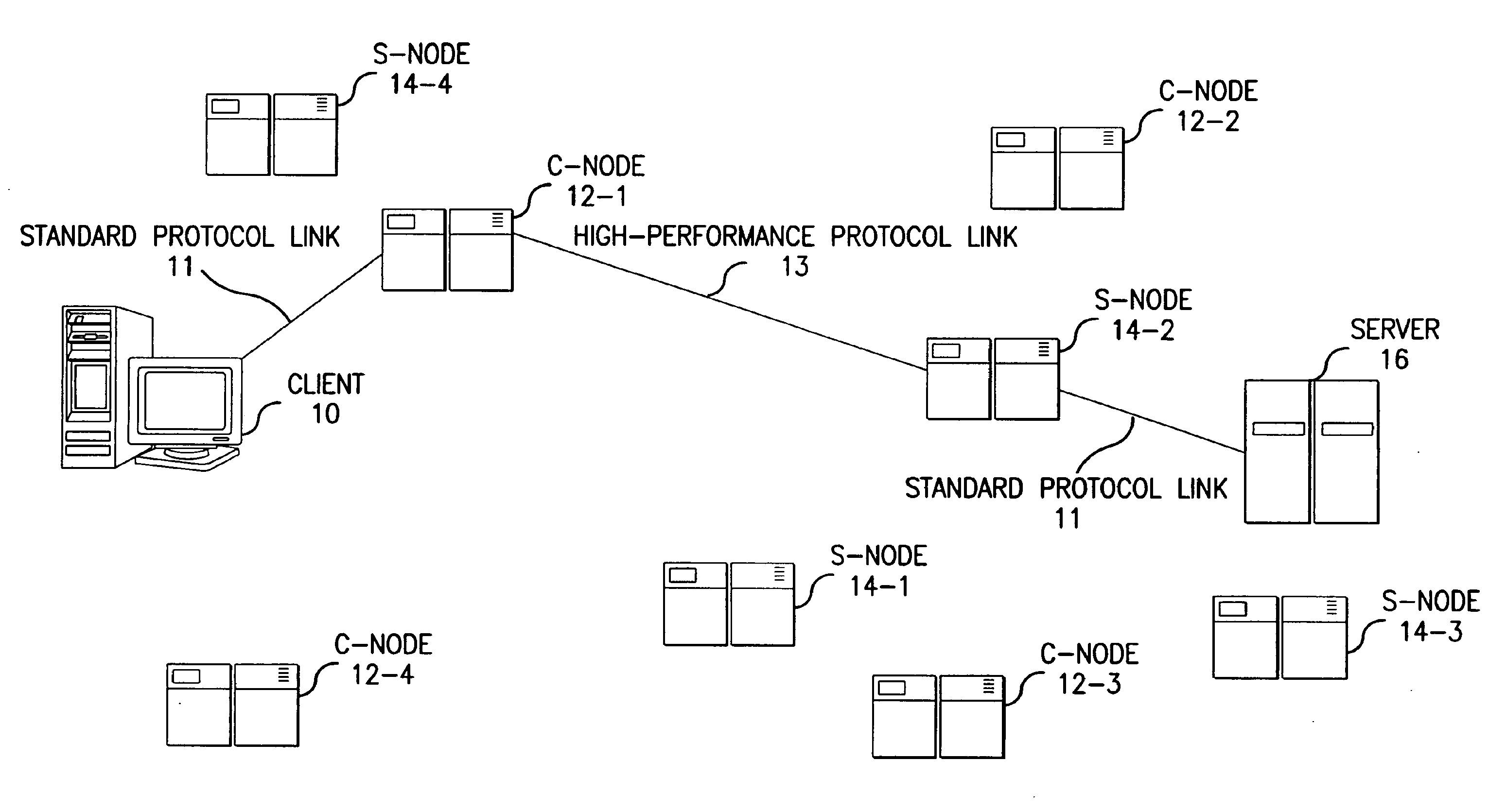Method for high-performance delivery of web content
a web content and high-performance technology, applied in the field of communication, can solve the problems of imposing a significant limitation on the internet communication speed, unable to guarantee reliable delivery, and far from the optimal protocol of internet communication between http and tcp, so as to accelerate the delivery of dynamically generated, increase the performance of network links, and significant internet performance gain
- Summary
- Abstract
- Description
- Claims
- Application Information
AI Technical Summary
Benefits of technology
Problems solved by technology
Method used
Image
Examples
Embodiment Construction
A General Description of the Method and System: Client Nodes (“C-nodes”) and Server Nodes (“S-nodes”)
[0032] The present invention comprises specialized nodes that are deployed at two or more locations throughout the Internet, with the capability to communicate with one another using a high-performance protocol and to select other specialized nodes for communication. In a preferred embodiment, such specialized nodes are located close to web servers and clients. It will be appreciated that the term “close” encompasses a variety of communications performance measures, such as network distance, current network conditions, and individual node capability. In particular closeness can be based on such metrics as bandwidth capacity, bandwidth cost, latency, security, administrative boundaries, administrative convenience, and current congestion on various network paths, or a combination of such metrics. The specialized nodes are used to communicate information, for example in packet form, fro...
PUM
 Login to View More
Login to View More Abstract
Description
Claims
Application Information
 Login to View More
Login to View More - R&D
- Intellectual Property
- Life Sciences
- Materials
- Tech Scout
- Unparalleled Data Quality
- Higher Quality Content
- 60% Fewer Hallucinations
Browse by: Latest US Patents, China's latest patents, Technical Efficacy Thesaurus, Application Domain, Technology Topic, Popular Technical Reports.
© 2025 PatSnap. All rights reserved.Legal|Privacy policy|Modern Slavery Act Transparency Statement|Sitemap|About US| Contact US: help@patsnap.com



